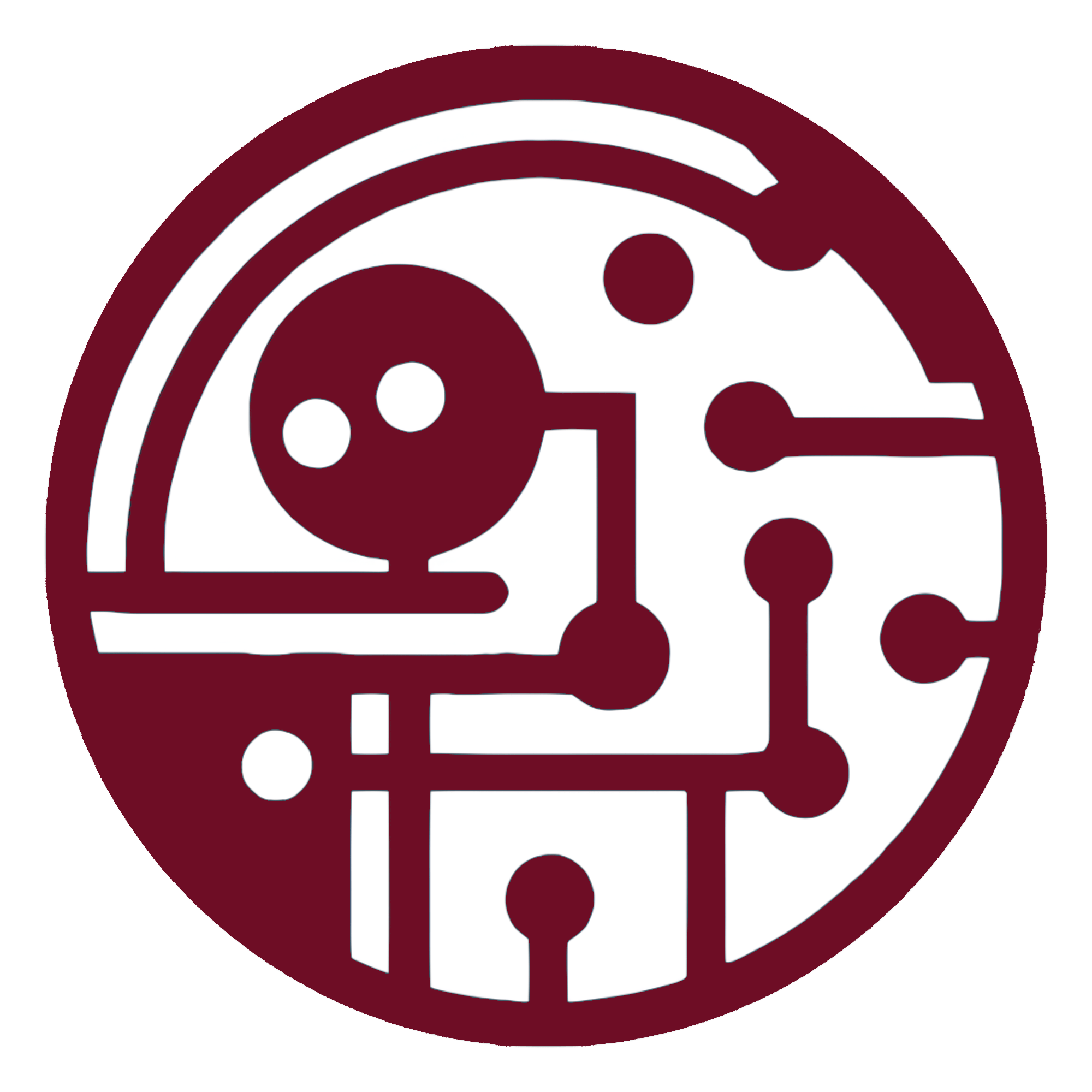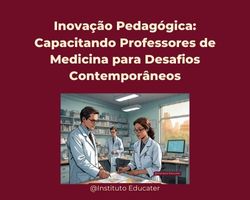Pedagogical Innovation:
Training Medicine Teachers for Contemporary Challenges
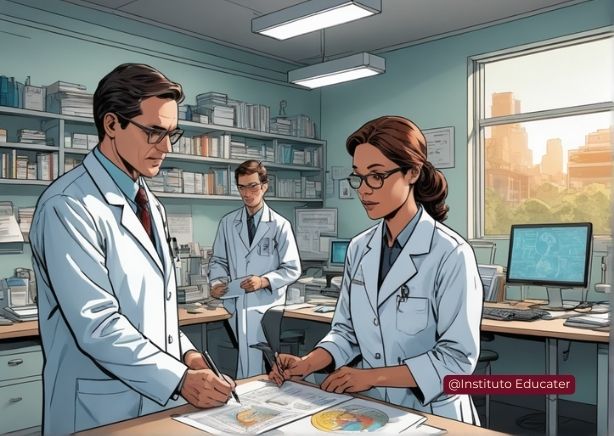
As the world advances, the field of medicine faces accelerated transformations, driven by technological innovations and changing public health demands. Faced with these challenges, medical education needs to constantly evolve, adopting new methodologies and tools to adequately prepare future doctors. Pedagogical innovation emerges, then, as a necessary response to align medical education with the emerging needs of the 21st century. This article proposes to explore innovative educational practices that can train medical teachers, promoting more dynamic and adaptive teaching, which not only meets, but anticipates the challenges of modern medical practice.
Medical education institutions face increasing pressure to adapt to a rapidly changing world, thus the need to pedagogical innovation becomes increasingly evident. Traditional practices, although they served well in the past, now need to be revised and enriched with new approaches that reflect technological advances and changing healthcare demands.
Digital technologies, for example, play an important role in reshaping medical curricula. Tools like advanced simulations and augmented reality offer students learning experiences that are both immersive and safe, allowing them to practice procedures without risk to real patients.
Problem-based learning (PBL) and team-based learning (TBL) are examples of active methodologies that transform the student from a passive receiver of information into an active participant in the construction of their knowledge. These methodologies encourage critical thinking and collaborative problem solving, essential skills for contemporary doctors.
Furthermore, it is imperative that medical education addresses the development of transversal skills, such as effective communication, leadership and empathy. These are skills that complement technical knowledge and are essential for practicing medicine in an era of increasingly complex interactions with patients and multidisciplinary teams.
Another important aspect of pedagogical innovation is continuous assessment. By replacing traditional exams with more dynamic forms of assessment that are integrated into everyday academic life, educators can provide more frequent and relevant feedback, which truly contributes to students' ongoing development.
Prepare students for the future of medicine it also means anticipating changes in patient demographics and prevailing pathologies. Medical training must be able to adapt quickly to new diseases and innovations in treatments and technologies.
Including students in the curriculum development process not only increases their engagement and satisfaction with the course, but also ensures that the CV stays relevant and adjusted to your needs and expectations. After all, they are the future professionals who will directly deal with emerging healthcare challenges.
As the next step in this engaging article, we invite you to explore more deeply how these innovative practices are being implemented at leading medical education institutions around the world. Continue reading in the next section where we will discuss success stories and how they can be models for other medical schools.
We will cover concrete, evidence-based strategies that are redefining teaching in medical schools around the world. The focus will be on digital technologies, active learning methodologies and the development of essential transversal skills. Through a detailed analysis of these pedagogical innovations, we will seek to demonstrate how they have the potential to transform medical training, making it more interactive, engaging and, above all, effective in facing contemporary global health challenges.

The Need for Innovation in Medical Teaching
Faced with a dynamic global scenario, medical education faces the challenge of continually adapting. A integration of pedagogical and technological innovations becomes essential to prepare future doctors for a market in constant transformation. Traditional approaches are no longer enough; It is necessary to incorporate practices that promote meaningful and effective learning, capable of integrating the complexities of modern medicine with the emerging needs of global health.
The necessity of innovation in medical teaching is driven by a constantly changing global scenario. As new diseases emerge and technologies evolve, the educational model needs to keep pace. This entails a transition from conventional teaching methods to more dynamic and adaptive approaches that reflect the complex realities of current medical practice.
Pedagogical innovations are not limited only to the introduction of new tools, but also to the revision of teaching strategies. A learning must be student-centered, promoting greater interaction and engagement. This not only increases learning effectiveness, but also prepares students to be reflective and critical professionals.
Integrating technology into the medical curriculum is essential. Tools such as digital simulations and virtual reality based learning allow students to experience clinical scenarios in a safe and controlled manner, honing their skills before practicing in real environments.
It is also essential to redefine learning objectives to align with the needs of the modern healthcare sector. This includes the development of skills in health management, understanding of public health policies and competence in emerging technologies that are reshaping medicine.
A interdisciplinary collaboration within medicine courses it can enrich the curriculum, introducing perspectives from other areas such as ethics, economics and social sciences. This holistic approach is effective in training doctors well-prepared for the multidimensional challenges of contemporary healthcare.
Student involvement in the curricular innovation process is another fundamental aspect. By allowing future doctors to actively participate in course redesign, institutions can ensure that medical education is truly relevant and adjusted to students’ expectations and reality.
Furthermore, assessments should be transformed to focus more on practical performance and less on memorization. This can be achieved through methods such as peer assessment, practical projects and simulations of real-life scenarios, which test students' ability to apply their knowledge in practical situations.
Advancing this discussion, the next section of our article will address how different global institutions have implemented these innovations. Follow along to understand the positive impacts of pedagogical changes and how they are being adopted around the world. Read on to explore concrete and inspiring examples of innovation in medical education.
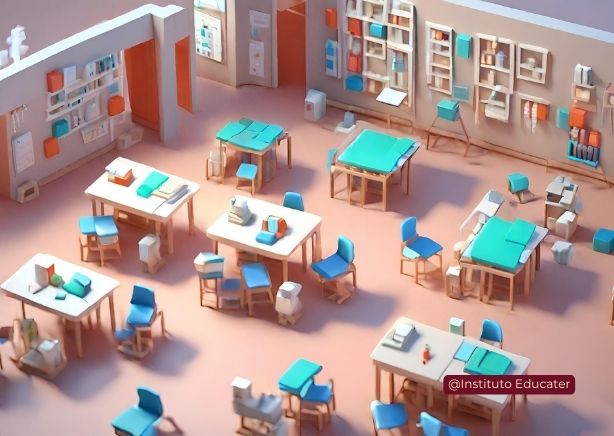
Digital Technologies in Medical Education
The implementation of digital technologies such as augmented reality, artificial intelligence and interactive e-learning platforms revolutionizes the educational scenario in medicine. These tools offer students an immersion in complex medical procedures without the risks associated with initial practice. Furthermore, these technologies facilitate access to updated content and promote greater interaction between teachers and students, regardless of geographic barriers.
A adoption of digital technologies in medical education has provided significant transformations in the way content is delivered and assimilated by students. The use of augmented reality, for example, allows students to visualize complex anatomy and procedures in a three-dimensional format, facilitating the understanding of concepts that previously depended on the imagination from static texts and images.
Artificial intelligence (AI) is another revolutionary tool in medical educational field. AI-based systems can personalize learning according to the pace and needs of each student, in addition to providing predictive analysis on future performance on tests and practical skills, better guiding the educational trajectory.
E-learning platforms have expanded rapidly, offering courses that can be accessed from anywhere in the world. That democratizes access to medical education of high quality and allows students from remote regions to obtain knowledge comparable to that in developed urban centers.
The use of digital simulators in medicine not only eliminates the risks associated with initial practice on real patients, but also allows for unlimited repetitions of surgical procedures. This practice increases students' confidence and skill before they perform procedures on people.
Virtual and simulated reality technologies can also be used for training in emergency scenarios, preparing students to react efficiently under pressure in critical situations, a fundamental aspect in the training of any doctor.
Online collaboration between students and teachers, facilitated by digital technologies, enriches the educational experience. Tools like discussion forums and virtual classrooms foster a collaborative learning environment that transcends geographic boundaries.
Access to medical databases and integration with health information systems, accessible through digital platforms, provide students with up-to-date and relevant resources for their training, ensuring an education aligned with contemporary medical practices.
The potential of digital technologies in medical education is vast and continues to expand. In the next section, we will explore how active learning methodologies, such as problem-based learning (PBL) and project-based learning (PjBL), are being integrated with these technologies to create richer, more effective educational experiences. Stay with us to discover more about these innovative practices.
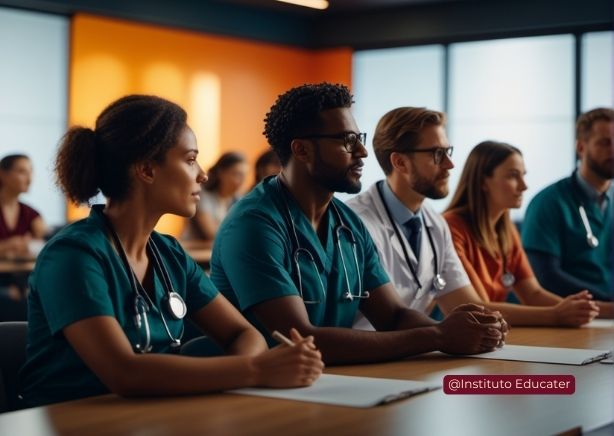
Active methodologies
Teaching Learning
Adopt active methodologies, such as problem-based learning (PBL), project-based learning (PjBL) and team-based learning (TBL), transforms the role of the student from passive recipient to active protagonist of their learning. These approaches foster critical skills such as analysis, synthesis, and evaluation, essential for medical practice. By applying theories to practical settings, students develop a deeper and lasting understanding of medical topics.
The adoption of active teaching and learning methodologies represents a paradigmatic change in medical education, placing the student at the center of the educational process. By implementing problem-based learning (PBL), students are challenged to work with complex medical problems, developing not only technical knowledge but also critical thinking and decision-making skills.
Project-based learning (PjBL) follows a similar line, encouraging students to create products or services through projects that integrate multiple areas of knowledge. This method promotes a holistic understanding of medicine and prepares students for the interconnections of diverse disciplines in real practice.
Team-based learning (TBL) is especially effective at cultivating collaboration and communication between students. In a field as collaborative as medicine, the ability to work effectively as a team is decisive. TBL allows students to simulate realistic work environments, facing medical challenges together.
These active methodologies are fundamental not only for cognitive development, but also for students' personal growth. They encourage autonomy, responsibility and a proactive stance towards studies and a future medical career.
In addition to improving knowledge retention, active methodologies encourage the practical application of what is learned. Students do not memorize for tests, but rather learn to apply their knowledge to solve real-world problems, an essential aspect of being a competent physician.
Implementing these methodologies requires a change both in the infrastructure and in the mentality of educators and institutions. Teachers must be trained to be facilitators of learning, not mere transmitters of information.
Digital technologies, discussed in the previous section, can be integrated with active methodologies to further enrich learning. Digital platforms offer varied resources that support PBL, PjBL, and TBL, enabling virtual simulations and collaborations that expand the boundaries of the traditional classroom.
The effectiveness of these approaches in medical education will be the topic of the next section. We will explore case studies and feedback from students and teachers about the real impact of these methodologies on their educational experiences. Stay with us to discover how these practices are shaping the healthcare professionals of the future.
Development of Transversal Skills
It is essential that the medical curriculum goes beyond teaching technical skills and promotes development of transversal skills. Skills such as effective communication, leadership, and empathy are indispensable in today's medical environment. The skills allow future doctors to more efficiently manage interactions with patients and multidisciplinary teams, in addition to adapting to continuous changes in the healthcare sector.
The contemporary medical curriculum must emphasize not only technical knowledge, but also the development of transversal skills that are essential in the context of today's medicine. Skills such as effective communication, leadership and empathy are not just complementary; they are fundamental to the efficient and humane medical practice.
Effective communication is essential in an environment that often requires clear and precise interactions between doctors, patients and teams. The ability to communicate complex diagnoses in an understandable manner can significantly improve treatment outcomes and patient satisfaction.
Regarding leadership, doctors often occupy leadership positions on healthcare teams. Developing leadership skills helps not only manage teams effectively, but also inspire and motivate colleagues and subordinates to achieve excellence in patient care.
Empathy, in turn, is an essential skill that allows doctors to better understand their patients' concerns and emotional conditions, facilitating a more personalized and compassionate approach to medical care.
Training in transversal skills must be integrated in an interdisciplinary way into the medical curriculum. This involves simulations and role-playing to practice these skills in realistic scenarios, preparing students for the real-life challenges they will face as doctors.
Furthermore, it is essential that these competencies are regularly assessed, ensuring that students not only learn, but also effectively apply these performances in their professional practices. Assessment methods may include 360 degree reviews, where colleagues, supervisors, and patients provide feedback on the doctor's interpersonal skills.
The adoption of digital technologies can also support the development of transversal skills. For example, e-learning and VR platforms can be used to create simulations of patient interactions, where learners can practice and receive immediate feedback on their communication and empathy skills.
This focus on developing soft skills is a response to the need for clinicians who are not only technically proficient, but who can also lead, communicate and empathize in an increasingly complex and interconnected healthcare environment.
Continuing with our discussion, the next section of our article will explore how continuous assessment can be employed to enhance both the technical and transversal development of medical students. Stay with us to discover effective assessment methods that reinforce continuous learning and practical application of acquired skills.
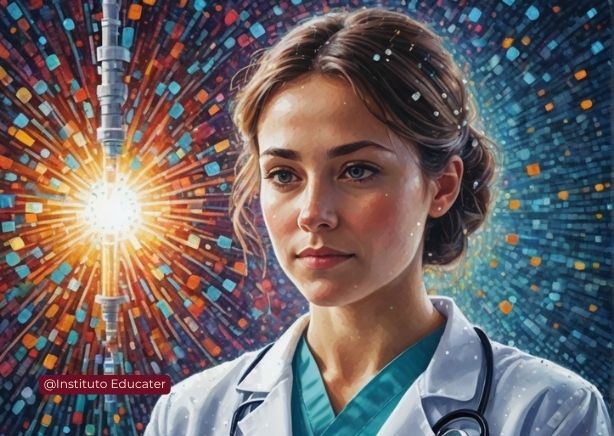
Continuous Assessment as a Learning Tool
Replacing one-off theoretical memorization exams with continuous assessment could revolutionize medical learning. This process allows for more accurate monitoring of student development, providing opportunities for adjustments to the educational process. O constant feedback It is a valuable resource that helps students consolidate knowledge more effectively and in line with professional demands. A criteria-based assessment focuses on what is important for the development of each student’s professional skills.
Integrating continuous assessment into the medical curriculum represents a significant transformation in the way we measure and support student progress. Moving away from traditional memorization exams, which often only measure short-term retention ability, continuous assessment focuses on sustainable skill development over time.
This type of assessment allows for detailed tracking of student progress, allowing educators to quickly identify areas where students are thriving and aspects that require additional attention. Such an approach is important in a field as complex and vital as medicine, where deep understanding and practical application of knowledge are essential.
Constant feedback, an important component of continuous assessment, serves as an invaluable tool for learning. It not only corrects misconceptions in real time, but also encourages students to reflect on their learning methods and adapt their strategies to continually improve.
Continuous assessment also favors a more personalized approach to teaching, where study plans can be adapted to meet the specific needs of each student. This is especially important in medicine, where the skills and competencies required can vary significantly from one specialty to another.
To implement criteria-based assessment systems allows teachers and students to focus on what really matters: developing professional skills and applying knowledge in clinical settings. This approach ensures that medical training is aligned with professional requirements and best practices in patient care.
This shift to continuous assessment requires, however, that medical education institutions invest in adequate resources and training for teachers. A teacher training is fundamentall to ensure that the transition to new assessment methods is successful and genuinely beneficial to students.
Technology plays a central role in this transition, offering platforms and tools that facilitate the collection and analysis of data on student performance. Such technologies allow for a clearer and more objective view of each student's progress, supporting a fairer and more effective assessment system.
Advancing the discussion, the next section of our article will explore how preparing for the future of medicine is being addressed in educational institutions. Follow along to understand the innovations and curricular adaptations needed to prepare doctors capable of facing emerging challenges in a globalized and technologically advanced world.

Preparing for the Future of Medicine
The medical curriculum must be proactive, anticipating future trends and challenges in the profession. Preparing to deal with new diseases, emerging technologies and diverse socioeconomic and cultural realities is essential. This advance preparation enables clinicians to not only react to changes, but also act as ethical agents, transformers in health.
As the world evolves, the field of medicine faces increasingly complex challenges that demand a proactive approach to the medical curriculum. Preparing future doctors to deal with new diseases requires not only up-to-date scientific knowledge, but also capacity for innovation and rapid adaptation to new health challenges.
The integration of emerging technologies into medical education is essential to enable students to use advanced diagnostic and treatment tools. Familiarity with artificial intelligence, telemedicine, and surgical robotics from an early age prepares students for the technological realities of modern medical care.
Furthermore, the curriculum must reflect the diversity of contexts in which physicians will operate. This includes training in cultural and social skills to treat patients from different socioeconomic and cultural backgrounds, ensuring inclusive medical care sensitive to diverse global realities.
Medical ethics, always a pillar of medical training, gains new dimensions in the face of technological advances and contemporary challenges. Teaching future doctors to navigate complex ethical dilemmas in situations involving new technologies and experimental treatments is more important than ever.
Adopting an interdisciplinary approach to medical education is also important. Collaboration between different areas of knowledge helps to train more holistic doctors, capable of understanding and integrating different perspectives into patient care.
Medical residency programs must also be adapted to provide hands-on experience across a broader spectrum of specialties, including those at the frontier of medical knowledge, such as medical genetics and biotechnology.
To ensure that doctors can continue to evolve after graduation, developing continuous learning skills must be a priority. Teaching doctors to stay up to date with the latest research and actively participate in lifelong learning is essential to the medical profession.
Preparing for the future of medicine is a continuous and dynamic path. In the next section, we will explore how including students in curriculum development can enrich the educational process and ensure that medical education is truly adaptive and relevant to future challenges. Read on to find out more about students' active participation in shaping their own medical education.
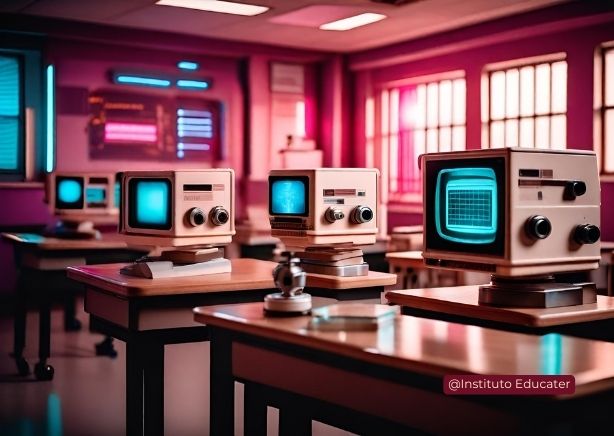
Student Involvement in Curriculum Development
Incorporating students into curriculum development enriches the educational process. To the actively participate in the creation of the curriculum, students contribute fresh and relevant perspectives, reflecting their experiences and expectations. This involvement generates a greater commitment to their own learning and increases the relevance of the content covered, aligning them with the contemporary needs and challenges they will face as professionals.
Including students in curriculum development is an innovative strategy that transforms the educational process in medicine. By involving students in creating and reviewing the curriculum, they become co-authors of their own learning trajectory, which can significantly increase their engagement and motivation.
This active involvement allows students to express their needs and expectations, contributing to a curriculum that not only meets academic demands, but also the real needs of the medical field. The student perspective helps identify gaps in the current curriculum and propose practical, applicable changes.
Furthermore, student participation in curriculum development fosters a culture of continuous feedback and open communication between students and faculty. This constant dialogue is essential to adapt teaching to rapid changes in medicine and technology.
Students who actively participate in structuring their courses develop critical leadership and decision-making skills. These skills are essential for future doctors who will be challenged to assume leadership and innovation positions in their work environments.
The learning methodology also benefits, as student-shaped programs tend to be more integrated and practical, focusing on essential skills for modern medical practice, such as teamwork, crisis management and communication skills.
This co-creation process can also facilitate the introduction of updated content more quickly into the curriculum, as students often bring ideas about Recent innovations and emerging trends in the health field.
To effectively implement student involvement in curriculum development, medical education institutions can establish committees or forums where students from different years and specializations collaborate directly with faculty and administrators in redesigning the curriculum.
Involving students in curriculum development is not just good educational practice; It is a necessity to train adaptive professionals prepared for the challenges of the future. Continuing with this theme, the next section of our article will address how these direct engagement practices are being applied in leading institutions around the world. Read on to explore real examples of success in this area.
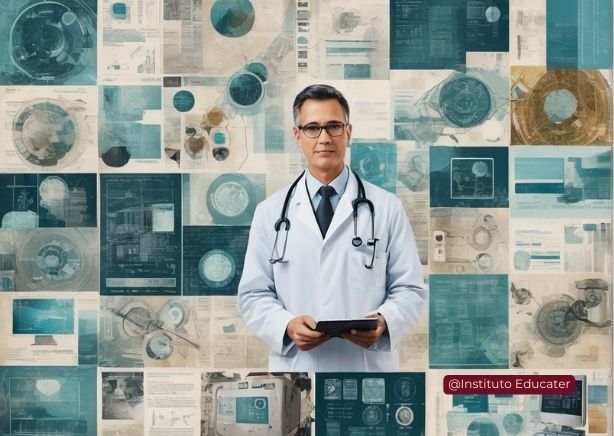
Conclusion
Pedagogical innovation in medical education is not just a logistical requirement; it is a strategic necessity that empowers teachers, and by extension their students, to achieve excellence in an ever-changing field. This article described essential strategies that can be implemented to address contemporary challenges, ensuring that medical education remains relevant, responsive and rigorous. We encourage educators and institutions to adopt these innovative practices to transform medical education and better prepare future healthcare professionals for the world that awaits them.
Pedagogical innovation is an adaptive response to increasing complexity and rapid changes in the field of medicine. It not only improves educational effectiveness but also prepares students to face contemporary challenges with competence and confidence.
Throughout this article, we discuss several innovative strategies in medical education, from the adoption of digital technologies to the implementation of active learning methodologies. Each of these approaches contributes to a more dynamic and engaging curriculum that reflects current and future global health needs.
It is essential that the educational institutions recognize the importance of developing transversal skills such as communication, leadership and empathy. These skills are as important as technical knowledge in a professional environment that values human interaction and ethical decision-making.
A continuous evaluation, in turn, offers a more accurate view of the student's progress, allowing personalized adjustments to the learning process. This assessment model ensures that students not only absorb information, but also apply their knowledge in a practical and effective way.
Furthermore, preparing for the future of medicine should not be an afterthought, but an integral part of the curriculum planning. Teaching students to anticipate and respond to changes in the medical field is critical to training professionals who will be leaders and innovators in healthcare.
Involving students in curriculum development not only enriches their educational experience, but also ensures that medical education remains relevant and adapted to the needs of the new generation of healthcare professionals.
Therefore, we encourage educators and institutions to adopt and continue to develop innovative practices in medical education. Educational transformation is an investment in the future of healthcare, which benefits not only students, but also patients and the broader community.
If you have experiences or ideas related to pedagogical innovation in medical education, we invite you to share your stories with us. Your participation is important as we continue to develop and improve our educational approaches. Send your message and be part of this important discussion.
In this article we explore essential strategies to enable teachers and students to face contemporary challenges in medicine. From integrating cutting-edge technologies to adopting active learning methodologies, see how leading institutions are shaping future healthcare professionals to be more adaptive, competent, and prepared for an ever-changing world.
How about sharing this story with your colleagues?
Together, we can inspire positive change in medical education, shaping future healthcare professionals who are more prepared and connected to the needs of the 21st Century.
Share now and be part of this transformation!
Common questions
Pedagogical innovation in medicine courses refers to the implementation of advanced educational methods and technologies to improve medical teaching and learning. These innovations are designed to empower students to meet contemporary challenges in the healthcare sector by integrating technologies such as digital simulations, virtual reality and e-learning platforms.
Active methodologies, such as problem-based learning (PBL) and project-based learning (PjBL), are typical examples of these innovations. These approaches engage students in practical scenarios, encouraging critical thinking and complex problem solving, preparing them more effectively for the practical demands of medicine.
Furthermore, pedagogical innovation also encompasses the development of transversal skills, such as leadership and communication, which are essential for modern medical practice. The introduction of these skills into the medical curriculum aims to create professionals who are more complete and adaptable to the different situations and environments they will encounter in their career.
For more information about trends and technologies in medical education, visit this article about trends in medical education.
Curricular innovation is the process of reformulating and modernizing educational curricula to integrate new knowledge, technologies and teaching methodologies. This process aims to make education more aligned with the current and future needs of students and the job market.
It involves incorporating advanced educational approaches such as problem-based learning (PBL), the use of digital tools, and the implementation of content that promotes critical skills such as critical thinking, creativity, and collaboration.
Curricular innovation also focuses on the development of essential skills that transcend technical knowledge, preparing students for practical and ethical challenges in their areas of professional activity.
One proposal for innovation in education aims to transform teaching and learning practices through the adoption of new technologies, methodologies and pedagogical strategies. This transformation is aimed at improving interaction between students and teachers, increasing the effectiveness of learning and ensuring that teaching is relevant to the current and future needs of society.
It includes the implementation of approaches such as personalized learning, where technology is used to adapt teaching material to the individual needs of each student, and active methodologies, which place students at the center of the learning process, encouraging them to build knowledge collaboratively and practice.
Furthermore, innovation in education also focuses on developing critical skills such as critical thinking, problem solving and adaptability, essential for success in a rapidly changing and increasingly interconnected world.
To the innovations in medical education have significantly transformed the way future healthcare professionals are trained. These changes include the adoption of advanced technologies such as medical simulation and augmented reality, which provide students with practical experiences without risk to patients.
Another significant innovation is the implementation of active learning methodologies, such as problem-based learning (PBL) and team-based learning (TBL). These approaches place students in real problem-solving situations, encouraging critical thinking and collaboration, essential skills in medical practice.
Additionally, the integration of interdisciplinary content into the medical curriculum, which involves combining knowledge from multiple disciplines, prepares students to holistically address contemporary healthcare challenges.
To the technological innovations in the healthcare sector are revolutionizing the diagnosis, treatment and management of diseases. One of the most impactful innovations is telemedicine, which allows remote consultations and remote patient monitoring, increasing access to specialized medical services, especially in remote areas.
Another significant technology is artificial intelligence (AI), used to improve the accuracy of diagnoses through algorithms that can analyze large volumes of medical data and images with greater efficiency than humans. AI is also used in surgical robotics, providing more precise and less invasive procedures.
Additionally, the use of wearables and smart devices for continuous health monitoring enables the collection of real-time data on patients' key conditions, facilitating the prevention and management of chronic diseases.
The composition of a medical resume An effective approach must include a combination of fundamental technical knowledge, practical clinical skills, attitudes and soft skills. Fundamental elements such as anatomy, physiology and biochemistry are essential, as is training in clinical reasoning, diagnosis and medical procedures.
It is essential to incorporate active learning methodologies, such as simulations and problem-based learning (PBL), to develop practical and problem-solving skills in real-world contexts. These methodologies help prepare students for the practical demands of medicine.
Furthermore, skills such as effective communication, empathy, and leadership should be emphasized, as they are fundamental to success in interacting with patients and working in multidisciplinary teams. The curriculum should also promote ongoing education and adaptation to new technologies and emerging treatments in healthcare.
Being a doctor requires a combination of technical and interpersonal skills fundamental. First, solid clinical skills are essential, including clinical reasoning, diagnosis, prescribing, and surgical procedures, depending on the specialty. In-depth knowledge in areas such as anatomy, physiology and pharmacology, among others, is essential.
In addition to technical skills, effective communication is essential. Doctors need to be able to explain complex medical conditions in a way that is understandable to patients and their families, as well as maintain clear communication with other healthcare professionals. Empathy and active listening skills are also key to providing sensitive, personalized care.
Ability to make decisions under pressure and problem-solving skills are also essential, especially in high-pressure environments like emergencies. Teamwork and leadership skills are equally important to collaborate effectively with other healthcare professionals.
To delve deeper into the skills needed for a medical career and how to develop them, visit Medicine Curriculum Guidelines.
O health education concept involves the process of empowering individuals and communities to increase control over and improve their health. This is achieved through the dissemination of information, education for disease prevention and the promotion of healthy lifestyles.
Health education seeks to develop skills necessary for a healthy life, including knowledge about the human body, diseases, their causes and treatments. Furthermore, it emphasizes the importance of preventive behaviors such as adequate nutrition, regular physical activity and abstaining from harmful substances.
This educational approach not only informs, but also motivates people to take practical steps to prevent disease and improve overall quality of life. It is important for public health campaigns, school programs and community initiatives aimed at promoting health and collective well-being.
To the health education actions are diverse and aim to promote health and prevent diseases through the engagement and training of individuals. These actions include disseminating information about risk factors and preventive measures, organizing public health campaigns and holding educational workshops and seminars.
Vaccination programs, nutritional education and promotion of physical activity are examples of direct actions. Such programs help raise awareness about the importance of a healthy lifestyle and preventative interventions to combat chronic diseases such as diabetes and hypertension.
In addition, health education actions can also include first aid training, stress reduction techniques and sexual education. These are key to empowering individuals to make informed decisions about their health and wellbeing, as well as preparing them to deal with health emergencies.
One health education plan is an organized strategy designed to inform the public about health issues and promote behaviors that contribute to well-being and disease prevention. This plan addresses the population's specific health needs and establishes clear objectives and methods for achieving them through educational actions.
Typical elements of a health education plan include identifying target groups, such as schools, communities, or workplaces, and creating educational materials tailored to these audiences. The plan also establishes how this information will be delivered, whether through workshops, digital media, information leaflets or community events.
Additionally, the plan includes evaluation and monitoring of actions, ensuring that health education objectives are met and adjusted as necessary to maximize public health impact. The effectiveness of these plans is central to the success of long-term public health and health promotion initiatives.
To become a professor of medicine, it is essential to have robust training in the healthcare field and a passion for education. For medical teachers, it is initially necessary to obtain a degree in Medicine, followed by a medical residency in the chosen specialty, as this provides the fundamental clinical experience for teaching.
After clinical training, it is recommended to pursue additional qualifications in education, such as a specialization, master's degree or doctorate in medical education or a related field. These qualifications help develop teaching and educational research skills, which are fundamental for an educator in the medical field.
For teachers of other professional categories, such as biologists, biomedical scientists, pharmacists, etc., professional training in the area and a degree are required to teach the subjects or curricular units of the medical course.
In addition to academic qualifications, it is important to acquire teaching experience, whether through assisting with courses, conducting seminars or participating in teacher training programs. The ability to communicate complex knowledge clearly and effectively is essential to success in this career.
Teaching Medicine requires a specific set of qualifications and experiences. Generally, teachers must hold a recognized degree in Medicine or a professional category and be duly registered with a professional council. Additionally, it is important to have completed a medical residency or postgraduate degree in the specialty they wish to teach.
Many institutions also require that their educators have relevant clinical experience, which ensures that they can provide teaching based on current and effective practices. Experience in research and academic publications in the medical field is also highly valued as it contributes to the development of the curriculum and course content.
In addition to clinical and research credentials, teaching skills are essential. Therefore, additional qualifications in medical education, such as a master's or doctorate in medical education or specific certifications for faculty, may be necessary or extremely beneficial.
Your message is important to us
Important
This is an open invitation to educators, students and healthcare professionals to engage in this educational transformation. Your participation, whether sharing experiences, ideas or challenges, is crucial to shaping the future of medical education. We are at an inflection point: together, we can lead the change toward medical education that truly meets society's needs. Are you ready to be part of this evolution?
